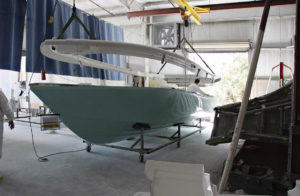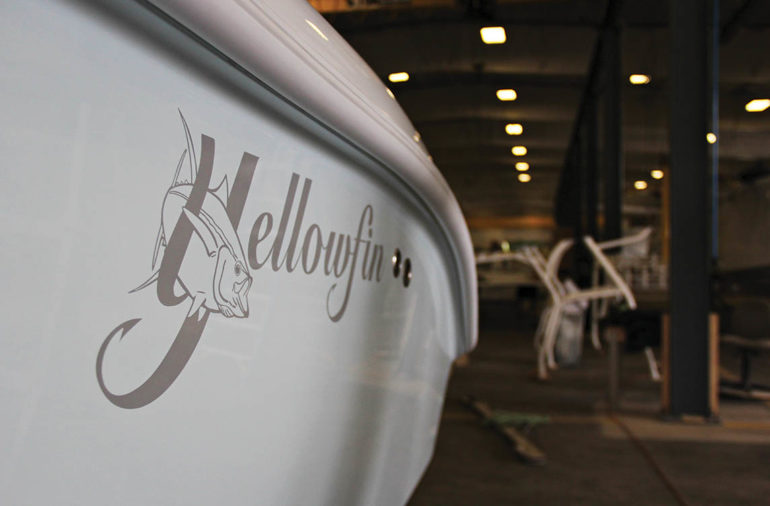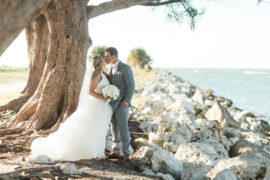By Ryan Rindone
Nothing about the design of a Yellowfin is done without purpose. With its Carolina flare for a sharp hull entry to split rough seas to its stepped hull for better efficiency at higher speeds, Yellowfin yachts are handcrafted to outperform expectations and whatever Mother Nature can manage.
 Each model is built one boat at a time, which ensures attention to detail and quality control. The build process begins with layering domestically-sourced fiberglass and Kevlar inside a mold. Sheets of PVC foam are added for additional structural support in key areas. Thick plastic sheeting is then spread over the mold, sealing the layers of material to the mold with powerful vacuums. Once a total vacuum is achieved, feed tubes leading to resin reservoirs are opened, and the resin is drawn into the fiberglass until it has impregnated every square inch. Hulls in this stage of the process remain sealed to cure for between three and seven days, depending on outside temperatures. Once cured, the mold is carefully separated from the hull with wooden shims and mallets. The deck, console, cockpit sole, t-top deck, and any other fiberglass components are similarly constructed.
Each model is built one boat at a time, which ensures attention to detail and quality control. The build process begins with layering domestically-sourced fiberglass and Kevlar inside a mold. Sheets of PVC foam are added for additional structural support in key areas. Thick plastic sheeting is then spread over the mold, sealing the layers of material to the mold with powerful vacuums. Once a total vacuum is achieved, feed tubes leading to resin reservoirs are opened, and the resin is drawn into the fiberglass until it has impregnated every square inch. Hulls in this stage of the process remain sealed to cure for between three and seven days, depending on outside temperatures. Once cured, the mold is carefully separated from the hull with wooden shims and mallets. The deck, console, cockpit sole, t-top deck, and any other fiberglass components are similarly constructed.
Once the vessel components are out of their molds, they are cut and trimmed to exact specifications. Internal components like the fuel tank(s), plumbing, electrical wiring, hydraulics, and custom structural modifications are installed within the cockpit sole. Next, the hull is married to the cockpit sole with powerful structural adhesive, forming a permanent bond. The hull and sole are then married to deck, and at this point, the boat really begins to look more like the boat envisioned by the new owner. The gelcoat is applied and wet-sanded, dry sanded, and polished; this process can be very time-consuming, as the process of sanding and polishing continues until a perfect mirror-like finish is achieved. Non-skid surfaces are then applied to the deck and the cockpit sole in all key areas.

Build time up to this point is typically between three and four weeks. The next step of the process is rigging, which is by far the most time-intensive. Rigging time depends on boat size, customer requested options, engines, and availability of custom aftermarket components. Examples include radar, autopilot, trolling motors, Power Poles, additional live wells, and numerous other custom considerations. During the rigging process is when the t-top and console are installed. Once rigging is complete, the build team puts each of the boat’s features through its respective paces to ensure everything is operating perfectly. The last step in the process is a complete detail from the tip of the bow to the propellers. Customers have the option of picking their new Yellowfin up at the factory in Bradenton, or they can have their new boat delivered. For customers intending to trailer their boat, their trailer is custom fit to their specific model, and tested for safety before delivery. Once the keys exchange hands, a lifetime of fun and adventure can begin.





